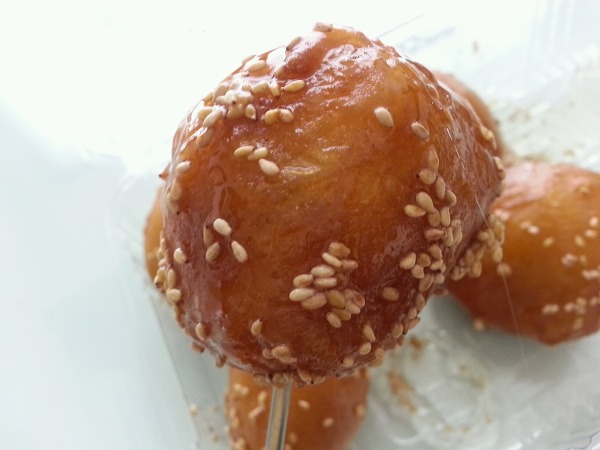Facts About Tongyeong-kkulppang
Kkulppang, often referred to as honey bread, is a delightful, sticky-sweet treat filled with sweet red bean paste. This beloved bread exists in a couple of regional varieties in South Korea, namely Tongyeong-kkulppang and Jinju-kkulppang. Tongyeong-kkulppang is renowned for its soft and fluffy texture, whereas Jinju-kkulppang is celebrated for its satisfying crunch.
The origins of kkulppang can be traced back to Tongyeong in 1963, during a period of post-war hardship. It was initially made using rationed wheat flour. The process of making kkulppang involves kneading wheat flour with eggs to create dough, which is then shaped into small balls and filled with sweetened red bean paste. These dough balls are deep-fried in vegetable oil, coated in syrup, and sprinkled with toasted sesame seeds. In addition to red bean paste, Tongyeong-kkulppang also features fillings such as sweet potato, chestnut, yuja, and green tea.
Kkulppang became a favorite among fishermen and shipbuilding workers in Tongyeong because it could withstand the warm climate and had a long shelf life. Today, it remains a cherished snack across South Korea, with each region incorporating its own unique twist on this traditional delight.

 North Korea
North Korea